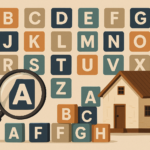
Key takeaways
Longer loan terms promise lower monthly repayments and slightly increased borrowing power, making them attractive at first glance.
However, they result in significantly higher total interest costs, keeping borrowers in debt for longer.
Banks benefit from extended loan terms as they collect significantly more in interest over time.
Many borrowers don’t keep their original mortgage for its full term, often refinancing or topping up, which extends their debt even further.
40-year mortgages don’t solve affordability issues; they just lock borrowers into debt for longer.
Owning a home has long been considered a cornerstone of the great Australian dream.
For many, it’s not just about securing a place to live, it’s a symbol of financial stability, success, and a ticket to long-term wealth.
But as property prices have skyrocketed, outpacing inflation and wage growth, homeownership has become increasingly difficult to attain for many beginners.
First-home buyers are stretching their budgets, delaying purchases, relying on family for financial assistance, or turning to alternative strategies like rentvesting just to get their foot in the door.
Now, there’s another option creeping into the market: 40-year mortgages.
On the surface, they appear to offer a way forward with lower monthly repayments which in turns means an increase in borrowing capacity.
But when you break down the numbers, it quickly becomes clear that these loans don’t make homeownership more affordable.
In reality, they keep Australians in debt for longer and cost them significantly more in the long run.

The growing appeal of 40-year mortgages
Traditionally, mortgages in Australia run for 25 to 30 years, aligning with an individual’s working life.
This structure allows borrowers to pay off their homes by or near retirement, reducing financial stress in later years.
But with affordability pressures mounting, some smaller lenders, not the major banks, at least not yet, are now offering 40-year loan terms.
These extended mortgages are being marketed as a way to:
- Reduce monthly repayments, making it easier to manage cash flow.
- Increase borrowing power, allowing buyers to access slightly more expensive properties.
It’s easy to see why these might appeal to struggling first-home buyers.
But the reality is that these so-called benefits are short-term fixes that lead to long-term financial pain.
The real cost of a 40-year mortgage
Let’s compare a standard 30-year mortgage with a 40-year mortgage using a $600,000 loan at 5.99% interest:
30-Year Mortgage
- Monthly repayments: $3,594
- Total interest paid: $594,206
- Total cost of loan (principal + interest): $1,194,206
40-Year Mortgage
- Monthly repayments: $3,297 (a $296 per month saving)
- Total interest paid: $837,628
- Total cost of loan (principal + interest): $1,437,628
That’s an additional $243,422 in interest just for extending the loan term by 10 years!
And that’s before considering the opportunity cost of keeping more of your money tied up in loan repayments instead of investing elsewhere.
A slight boost in borrowing power—but is it worth it?
You might think that a longer loan term would allow for significantly higher borrowing capacity, but the actual increase is relatively modest:
- A single borrower on a full-time wage might qualify for around $24,000 more with a 40-year term.
- A dual-income couple could borrow up to $48,000 more.
While an extra $20,000–$50,000 might provide a bit of a buffer in a competitive auction, the trade-off, paying hundreds of thousands more in interest is far too steep.
Why lenders love 40-year loans (and borrowers should be wary)
Make no mistake, banks aren’t offering these extended mortgages out of goodwill.
While they might appear to be making homeownership more accessible, the real motivation is simple: longer loan terms mean more interest paid, which means higher profits for lenders.
The business of banking is built on extending credit for as long as possible and ensuring customers remain locked into repayments.
If a borrower takes out a 40-year mortgage and only makes minimum repayments, they will end up paying the bank more than double the amount they originally borrowed.
And let’s not forget, that most homeowners don’t hold onto their original loan for the full term.
Over the decades, borrowers refinance, renovate, or take out additional loans for investment properties.
This cycle means they often restart the loan clock, further extending the time it takes to fully own their home.
The bigger problem: more Australians retiring with mortgage debt
One of the biggest red flags of extended loan terms is that they increase the likelihood of Australians carrying mortgage debt into retirement.
Just 10 years ago, 23% of retirees still had a mortgage.
Today, that figure has jumped to 36%, according to the ARC Centre of Excellence in Population Ageing Research.
This trend is deeply concerning, as retirees on fixed incomes (such as superannuation or the aged pension) struggle to keep up with mortgage repayments.
Instead of enjoying a debt-free retirement, many are forced to:
- Sell their homes (potentially downsizing or moving to less desirable locations)
- Work longer than planned just to keep up with repayments
- Rely more on government support, adding financial strain to an ageing population
With 40-year mortgages, this problem will only get worse.
If a 34-year-old first-home buyer takes out a 40-year loan, they’ll be 74 years old before it’s fully repaid—well past retirement age.
And even if a buyer takes out this mortgage at 24 instead of 34, they’re still paying off debt into their mid-60s, limiting their ability to build wealth and financial security along the way.
A dangerous precedent for future buyers
The rise of longer mortgage terms is a symptom of Australia’s affordability crisis, not a solution to it.
Instead of tackling the real issues such as supply shortages, tax policies that favour investors, and stagnant wage growth, lenders are simply pushing the problem down the road.
For borrowers, the question is simple:
- Do you really want to sacrifice decades of financial flexibility just for slightly lower repayments today?
- Is it worth spending an extra $200,000+ in interest just to stretch your borrowing power by $24,000–$48,000?
Smarter alternatives to consider
Rather than locking yourself into a lifetime of debt, consider these alternative strategies:
- Strategic property selection – Look for high-growth areas where capital appreciation will help build equity faster.
- Rentvesting – Buy an investment property in an affordable growth market while renting in a preferred lifestyle location.
- Shorter loan terms with higher repayments – If you can manage it, opt for a 20- or 25-year mortgage and make additional payments to reduce interest costs.
- Increase savings discipline – The stronger your deposit and financial position, the less you need to borrow, and the faster you can pay it off.
- Consider alternative financing options – Government assistance schemes, joint ventures, or offset accounts can help reduce loan burdens.

The bottom line
While they might appear to make homeownership more achievable, 40-year mortgages are a financial time bomb.
They don’t reduce housing costs, they just spread them out over a longer period, keeping borrowers in debt for longer and paying significantly more interest.
If housing affordability is the issue, the solution isn’t to take on more debt, it’s to fix the underlying market conditions that have made homeownership so difficult in the first place.
Because homeownership should be about financial freedom, not a lifetime of repayments.














